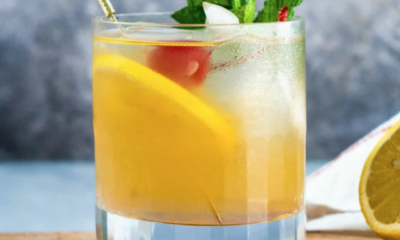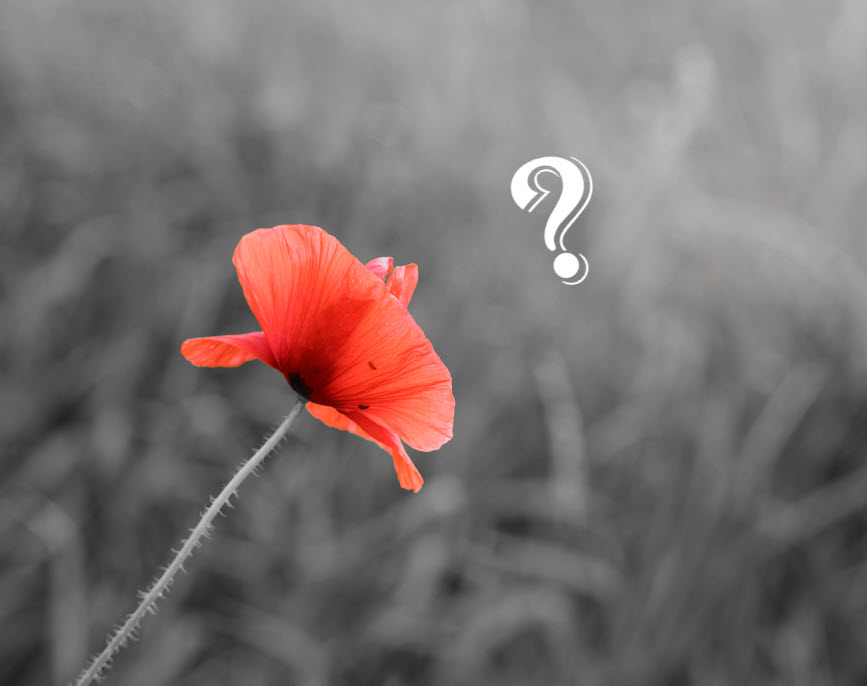Cannabis News
If Cannabis Use Disorder Is Real, What Does a Healthy Relationship With Marijuana Look Like?
Published
2 years agoon
By
admin

What does a healthy relationship with cannabis look like?
With the recent artice on Cannabis.net titled, “Cannabis Use Disorder Is Now a Real Thing?” getting so many comments and shares, it made me wonder, if too much weed is a disorder, what is a healthy, “thumbs up”, relationship with cannabis look like?
What is the ideal relationship between users and the substances they use? Whenever I hear about “Marijuana Use Disorder” or “the person has an unhealthy relationship to cannabis”, it makes me wonder, “what is a healthy relationship according to science, users, etc?”
What’s the average consumption of cannabis users? Do we have any real world data on that? Compared to the DSM-V, how many average users would be considered “heavy users”?
This is what we’ll explore in today’s article and more, and more importantly, create an accurate depiction of a “healthy” cannabis relationship.
What does the DSM-V say about Marijuana Use Disorder?
In our quest to define a healthy relationship with cannabis, it’s important to consider the perspective of authoritative sources like the Diagnostic and Statistical Manual of Mental Disorders, Fifth Edition (DSM-V). I personally am not a big fan of the manual, however, I do recognize the need to list and try to define disorders on a psychological and clinical scale. Unfortunately, this is the only manual of the kind. This manual is widely recognized as a comprehensive guide to mental health conditions, providing a standardized framework for diagnosis and classification.
When it comes to cannabis, the DSM-V introduces the concept of “Marijuana Use Disorder.” This term is used to describe a range of behaviors associated with problematic cannabis use, often characterized by impaired control, social impairment, risky use, and withdrawal symptoms when use is reduced or stopped.
The DSM-V categorizes the severity of Marijuana Use Disorder based on the number of symptoms experienced. Mild Marijuana Use Disorder entails experiencing two to three symptoms, while moderate involves four to five symptoms, and severe involves six or more symptoms.
Some of the symptoms listed in the DSM-V include unsuccessful efforts to cut down or control cannabis use, spending a significant amount of time obtaining, using, or recovering from the effects of cannabis, and giving up or reducing important activities due to cannabis use.
It’s important to note that the DSM-V doesn’t necessarily label all cannabis use as problematic. Instead, it focuses on patterns of behavior that may indicate an unhealthy relationship with the substance. Context, frequency, and impact on daily life are key factors considered in assessing whether someone may have Marijuana Use Disorder.
While the DSM-V provides valuable insights, it’s essential to remember that not all cannabis use falls under the category of disorder. A significant portion of users have a healthy relationship with cannabis, using it responsibly and without negative consequences. To truly understand a healthy cannabis relationship, it’s necessary to consider a broader spectrum of factors beyond diagnostic criteria.
Here’s a list of all “problematic behaviors” that if you were to have a majority of them, would classify you as MUD:
-
Unsuccessful efforts to cut down or control cannabis use.
-
Spending a significant amount of time obtaining, using, or recovering from the effects of cannabis.
-
Craving, or a strong desire or urge to use cannabis.
-
Failing to fulfill major role obligations at work, school, or home due to cannabis use.
-
Continued cannabis use despite having persistent or recurrent social or interpersonal problems caused or exacerbated by the effects of cannabis.
-
Giving up or reducing important social, occupational, or recreational activities because of cannabis use.
-
Using cannabis in situations where it is physically hazardous.
-
Continued cannabis use despite knowledge of having a persistent or recurrent physical or psychological problem that is likely to have been caused or exacerbated by cannabis.
-
Tolerance, as defined by either needing markedly increased amounts of cannabis to achieve intoxication or desired effect or markedly diminished effect with continued use of the same amount.
-
Withdrawal, as manifested by either the characteristic withdrawal syndrome for cannabis or using cannabis (or a closely related substance) to relieve or avoid withdrawal symptoms.
Okay, so now let’s look at what the average consumer consumes.
Average User Consumption
Determining the average amount of cannabis consumed per week can be quite complex due to factors like differing legal regulations, social stigmas, and the varying potencies of products available. However, by analyzing data from various sources, we can gain some insights into the average consumption patterns of cannabis users.
According to surveys conducted in states where cannabis is legal, the average cannabis user consumes around 0.5 to 1 gram per day, which translates to approximately 3.5 to 7 grams per week. This estimation is based on self-reported data and can vary widely among individuals, taking into account factors such as frequency of use, method of consumption, and individual tolerance levels.
Sales data from legal cannabis markets also provides some insights. For instance, in states where cannabis is legal, dispensaries often sell products in measurements of grams or eighths of an ounce (3.5 grams). This suggests that many consumers are purchasing quantities in the range of 3.5 to 7 grams per transaction, which could last them a week or more.
It’s important to note that these statistics can vary based on the individual’s usage habits, whether they are occasional or regular users, and the intended purpose of consumption (recreational or medicinal). Moreover, cultural differences and shifts in attitudes towards cannabis may influence consumption patterns.
As cannabis legalization continues to evolve and more accurate data becomes available, we can expect a clearer picture of average consumption patterns to emerge. Additionally, the increasing availability of lower-dose products, such as edibles with precise THC content, may also impact the way users regulate their consumption.
Either way, we can assume that the average consumer smokes between a half to a full ounce per month.
Heavy Use
According to a recent Huberman Lab Podcast, “heavy marijuana use” is defined as more than twice per week. [Source]
Considering that the average user smokes between 3.5 grams – 7 grams per week, this would mean that the “average cannabis user” is a “heavy cannabis user” according to Huberman. How do I come to this calculation?
Simple really!
Considering that a single joint is about 0.9 grams of cannabis, 3.5 grams would roughly translate to five joints. As an experienced cannabis user, I can tell you that I won’t smoke a full joint in a single session.
This means that my joint lasts maybe the whole day. Using this as a base, we can assume that the average consumer consumes between 5-7 joints per week, or daily. Sometimes twice a day. Sometimes all throughout the day.
The vast majority of consumers then are “heavy consumers”. This is strange to me, because in the same podcast with Huberman, the assumption is that heavy use increases the possibility of schizophrenic or Bi-polar episodes later in life.
But if the vast majority of users are indeed, “heavy users”, shouldn’t we see a similar rise in diagnoses of Bi-Polar Disorder and Schizophrenic disorders?
In order to answer this question, I believe the best bet would be to analyze the data from states such as Colorado or California, compare the pre-legalization data with post-legalization data, remove factors such as “diagnostic techniques and classifications” and how they have changed over the years…and see if there is indeed correlation between cannabis use and these mental health issues.
However, finding this data is complicated. I have looked and there is no clear source on this, which makes me question the validity of the studies that claim that cannabis has an impact on these issues. If they are only using small sample sizes, and not correlating it with the overall statistics within region, I wonder about the accuracies of their assessments.
Irrespective of these issues, from what I had found, there wasn’t a statistically significant increase post legalization.
Do with that what you will.
What does a Healthy Relationship with Cannabis look like?
A healthy relationship with cannabis is characterized by balance, mindfulness, and a conscious understanding of its effects on physical, mental, and emotional well-being. It involves using cannabis as a tool to enhance certain aspects of life rather than as a means of escaping or numbing challenges. Here’s what a healthy relationship with cannabis may look like:
Moderation: A key element is using cannabis in moderation. This means avoiding excessive consumption that could lead to impairment, decreased productivity, or negative health effects. Users are conscious of their limits and aim to maintain control over their consumption.
Purposeful Consumption: Individuals with a healthy relationship to cannabis use it with intention. Whether for relaxation, creativity, pain relief, or spiritual exploration, they have a clear purpose for their use and are aware of how it aligns with their goals.
Mindful Awareness: Healthy cannabis users are attuned to the effects it has on their mind and body. They pay attention to how different strains, doses, and consumption methods impact them, making adjustments as needed to achieve the desired outcome.
Open Communication: Users in a healthy relationship with cannabis are open to discussing their usage with friends, family, and healthcare professionals. Of course, sometimes our social situations doesn’t allow for this open communication, however, if cannabis no longer is “taboo”, it becomes more manageable as a behavior. You can give it a “place” in your life.
Maintaining Priorities: Responsibilities and commitments come first. Healthy cannabis users ensure that their cannabis consumption does not interfere with their work, relationships, or daily activities. If you use it for pain management, of course this will mean that you consume prior to activities – but anyone who uses cannabis for pain management knows that the “weed hits differently”. Nonetheless, getting shit done is absolutely key to being a healthy stoner.
Self-Awareness: They have a good understanding of their own tolerance levels and vulnerabilities. This self-awareness enables them to make informed choices about consumption and recognize signs of any negative impact. For example, if you notice you’re smoking more than usual, you may want to stop and consider what’s going on in your life. What is causing additional stress? Dealing with the real issues in your life as opposed to “smoking them under the rug”, is what constitutes a real healthy relationship.
For example, sometimes, I abstain from smoking to recalibrate myself, to test myself, etc…I eliminate cannabis from my daily behavioral activities to see if it has an impact on my psycho-spiritual wellbeing. It’s typically never the cannabis that interferes with my ability to perform, but sometimes cannabis can make it harder to spot the source of origin. A bit of abstinence can help you recalibrate, and once dealt with, you can return to typical consumption patterns.
Avoiding Dependency: Individuals with a healthy cannabis relationship do not rely on it as a sole coping mechanism. They have a range of tools and strategies to manage stress, anxiety, or other challenges. Do yoga, go to the gym, go for walks, etc. Don’t just have cannabis as your means of escape, have natural ways to do it. I use breathwork, meditation, and exercise as key factors to keep me balanced.
Respect for Others: Healthy users are considerate of those around them. They avoid imposing their cannabis use on others and respect non-users’ preferences and boundaries. This is just basic manners, if you don’t know how to behave with your substance…you’re an idiot. Cannabis users that “don’t give a fuck”, are the ones that give the art of consumption a bad name.
Some people don’t like weed, if you can’t “not smoke” for a few hours or days because of them, then you have become dependent on weed.
The Sticky Bottom Line
The biggest problem with academia telling users “what good use” is, is that the majority of them have no idea about what it means to be a regular user. They take sample groups, compare data, make conclusions.
This is nice for certain things, but for example, not understanding that the majority of users consume roughly a half ounce to a full ounce a month, meaning they consume more than what is considered “heavy”, is a blindness academia cannot comprehend.
Heavy use for them is twice a week. A regular user says, “I smoke daily!” and they do not have a problem with cannabis. This is why I wrote this article, to show you that there are ways to smoke “heavily” and still remain in a healthy relationship with the plant.
Hopefully, this gave you some perspective.
CANNABIS USE DISORDER IS WHAT, AGAIN? READ ON…
CANNABIS USE DISORDER IS A REAL THING, SAY WHAT?
You may like
-


The Best Tariff Friendly Cocktails
-


Cannabis Consumers Are Being Hit By The Tariffs
-


The Best Tips To Update Your Wardrobe
-


Former New York Knick Iman Shumpert debuts ‘TSA Approved’ legal cannabis brand
-


How New York pot pioneers made it to legal dispensary shelves
-


Scientists Now Think That One Compound in the Cannabis Plant Can Replace All Opiates
Cannabis News
Scientists Now Think That One Compound in the Cannabis Plant Can Replace All Opiates
Published
20 hours agoon
April 3, 2025By
admin

Which Cannabis Compound Do Scientists Think Can Replace Opiates?
…And Why This Is Important
Opiates are a type of pharmaceutical drug that’s been made from the opium poppy plant. While it’s somewhat a ‘natural’ substance that’s been extracted from the fibers and sap of the opium poppy plant, these are extremely dangerous sedatives that act on the central nervous system. However, there are completely synthetic opioids as well, which are manufactured entirely in laboratories.
Famous examples of well-known and widely-used opiates today include heroin, codeine, and morphine. They all work similarly, binding to the brain’s opioid receptors and users feel a drastic reduction in pain. It also causes users to feel euphoric, drowsy, or sleepy. Common side effects include constipation and nausea.
Because opiates are powerful for dulling one’s pain perceptions, they have become commonly prescribed by doctors and hospitals for pain relief. That said, opiates have become one of the world’s most addictive, dangerous, and fatal drugs – and you can get prescribed it right by your very own physician. Repeated use of opiates can easily lead to dependence and addiction, and eventually consuming high doses can drastically slow down breathing, and cause brain damage, or even death.
Since doctors still keep prescribing opioids, this has resulted in the deadly Opioid Epidemic, which has killed thousands of people. It’s a worrisome public health crisis, most especially because of fentanyl, an illegally manufactured opioid which is said to be 50 times more potent than heroin.
Could The Answer To The Opioid Epidemic Lie In Cannabis…Terpenes?
The past few years have shown that cannabis legalization is critical for surviving the opioid epidemic, and reducing overall opioid consumption.
The results of a recent research paper, which builds on past studies conducted by Dr. John Streicher, who is a member of the Comprehensive Center for Pain and Addiction, reveals fascinating findings. According to Streicher, cannabis terpenes were found to provide relief in inflammation models as well as on neuropathic pain caused by chemotherapy.
For the study, Streicher and his research team analyzed 4 kinds of terpenes that are found in mid to high levels in Cannabis sativa plants: linalool, geraniol, beta-caryophyllene, and alpha-humulene. They discovered that each terpene produced significant pain relief among mice subjects with fibromyalgia and post-operative pain, and among the terpenes, geraniol was found to be the most powerful.
“Our research is showing that terpenes are not a good option for reducing acute pain resulting from an injury, such as stubbing your toe or touching a hot stove; however, we are seeing significant reductions in pain when terpenes are used for chronic or pathological pain,” he said. “This study was the first to investigate the impact of terpenes in preclinical models of fibromyalgia and post-operative pain and expand the scope of potential pain-relieving treatments using terpenes,” Streicher said.
Cannabis terpenes are the compounds responsible for the aromatic profile of each strain; they are located in the plant trichomes. Not only do they contribute to each strain’s unique flavor and odor, but they also have valuable therapeutic and medicinal benefits. There are around 150 kinds of terpenes known today, though in the entire plant world, there are known to be some 20,000 terpenes.
Understanding the therapeutic benefits of terpenes is incredibly valuable also because they don’t contain THC (tetrahydrocannabinol), the compound in marijuana that gets you high.
“With fibromyalgia, there isn’t much of an understanding of what the pain state is, and there are not a lot of great options for treating it,” explains Streicher. “Our findings show that terpenes may be a viable treatment option for fibromyalgia pain, which could potentially have a large impact and make a difference for an under-treated population.”
Other Studies
This is not the first time that cannabis terpenes have been found to demonstrate excellent pain-relieving properties. It must be noted that just like what Streicher says, terpenes seem to do better with chronic pain management, instead of acute pain management.
Another study from 2024, which was published in The Journal of the Association for the Study of Pain, was conducted by researchers at the University of Arizona and the National Institutes of Health. The investigators analyzed the analgesic properties of different terpenes including geraniol, humulene, linalool, pinene, and caryophyllene among mice subjects with chemotherapy-induced peripheral neuropathy.
According to the researchers, all the terpenes delivered analgesic effects that were equivalent to around 10 mg/kg of morphine. It was also interesting to note that administering both morphine and terpenes together at low doses resulted in ‘enhanced’ pain-killing effects.
“Together these studies identify cannabis terpenes as potential therapeutics for chronic neuropathic pain,” said the investigators.
There have also been other studies that have found that combining cannabis with opioids can indeed provide long-lasting pain relief. It comes with the added benefit of reducing opioid doses needed for effective pain control. This phenomenon is called opioid-sparing. These types of protocols can be beneficial for patients who suffer from severe, chronic pain caused by cancer, arthritis, joint problems, fibromyalgia, diabetes, post-surgical pain, migraines, nerve damage, and so much more.
Conclusion
Learning more about the pain-killing properties of terpenes is extremely valuable for the medical community, patients, and even society as a whole. We can all do with less opioid addictions because it has torn families apart, and caused the deaths of thousands of people.
Terpenes, or cannabis in general, offer a natural and safe alternative that can be complementary to other pharmaceutical treatments designed to reduce pain.
SWAPPNG OPIOIDS FOR CANNABIS, READ ON…


Cannabis and the Authoritarian State
Cannabis has been legal for longer than it has been illegal. Let that sink in for a minute. For thousands of years, humans cultivated and consumed cannabis freely across civilizations and continents. It wasn’t until the early 1900s that we witnessed a massive push to drive hemp and cannabis into the black market, primarily due to industrial competition from petrochemicals, pharmaceuticals, and other industrial applications.
What makes cannabis so threatening to powerful interests? For starters, hemp and cannabis are highly versatile crops with over 50,000 different uses, from medicine to textiles to fuel. Even more remarkable is how this plant is hardwired to work with the human body through our endocannabinoid system—a biological network we didn’t even discover until the 1990s.
Perhaps most threatening of all is that cannabis is insanely easy to grow. This means that if the plant helps you with a particular physical ailment, you have the ability to grow your own medicine indefinitely. No insurance premiums, no wait lists, no pharmaceutical middlemen—just you cultivating your own healing directly from the earth.
Authoritarians do not like this, not one bit. When people can meet their own needs independently, power structures lose their grip. When citizens can think differently without permission, control systems begin to fail. So today, we’re going to look at the interesting relationship between authoritarianism and cannabis, and how this humble plant plays a key role in keeping you free.
We’ve already established the versatility of cannabis, but there’s another element that those old D.A.R.E. PSAs inadvertently reveal about what authoritarians think about cannabis. I’m talking, of course, about “behavior.” You see, in an authoritarian system, you and I are but cogs in the machine. We’re the expendables who should be proud to work ourselves to death for our “fearless leaders.”
This is precisely why certain ideas, philosophies, religions, movements, books, and substances are typically banned in authoritarian regimes. Take North Korea as an example: everything from the type of television citizens watch to the music they hear is a tightly spun spell designed to keep the populace in check. While they don’t have explicit laws against hemp (they actually grow it industrially), smoking psychoactive cannabis is strictly forbidden.
Contrast this with places like Malaysia, where you can get up to 5 years for possessing just 20 grams of cannabis, and even face the death penalty depending on the situation. These authoritarians don’t play around when it comes to cannabis because they know it affects the behavior of their populace in ways they can’t control.
The question becomes: what behavior do they fear so much that cannabis produces within the individual?
The answer is a critical mind. People who consume cannabis often begin to question their own belief systems. Most regular users undergo some transformation in their values and perspectives. Cannabis has a unique way of helping people see beyond cultural programming and think outside established paradigms. It can make the familiar strange and the strange familiar—a psychological state that’s antithetical to authoritarian control.
This independent thinking runs counter to the narrative of authoritarians who wish to maintain a tight grip on social consciousness. If even 10% of a population begins to pivot in their behavior within a regime, it can have massive ripple effects. Just look at cannabis in the US—it went from being demonized to being embraced by the majority in less than 80 years, despite massive propaganda efforts.
For authoritarians, psychoactive cannabis isn’t primarily a threat to public health and wellbeing—it’s a threat to the health and wellbeing of authoritarianism itself. When people start thinking differently, they start living differently. When they start living differently, they start demanding different. And that’s the beginning of the end for any system built on unquestioning obedience.
Beyond the threat to thought control, there’s another reason why drugs in general remain illegal: the state can use prohibition as a weapon against the populace. This isn’t conspiracy theory—it’s documented history.
Take Nixon’s war on drugs. His domestic policy chief, John Ehrlichman, later admitted: “We knew we couldn’t make it illegal to be either against the war or black, but by getting the public to associate the hippies with marijuana and blacks with heroin, and then criminalizing both heavily, we could disrupt those communities.” Nixon essentially placed cannabis on the Controlled Substances Act because he needed an excuse to shut down anti-war protests and target Black communities.
Since hippies and anti-war protesters were smoking “freedom grass,” making it illegal would circumvent their freedom of speech and freedom of assembly, and more importantly—turn free citizens into state property. It’s a win-win if you’re an authoritarian looking to silence dissent.
Then there’s the whole “boogeyman” complex that prohibition creates. We’re told “drug dealers” are roaming the streets preying on innocents, giving them “marihuanas” so they can do vile things. What the government conveniently leaves out is how the banks these “dealers” use to launder their money remain untouched. They don’t mention the shadier dealings of law enforcement either—like running guns into Mexico (eventually leading to the death of one of their own), or spraying poison on crops, killing and hospitalizing people because, you know…”Drugs are bad!”
Authoritarians cannot let go of the value that keeping the most widely used illicit substance in the world illegal provides them. This explains why the US hasn’t federally legalized cannabis despite nearly 80% of Americans supporting some form of legalization. It’s not because they don’t have enough research or that they’re genuinely concerned about public health—it’s because prohibition gives them all the privileges of violating constitutional rights while siphoning money into their coffers.
Drug prohibition creates a perpetual enemy that can never be defeated, allowing endless justification for surveillance, militarized police, asset forfeiture, and expansion of state power. What authoritarian could resist such a convenient tool?
Cannabis is a plant. You can’t make nature illegal—it’s counter to the human experience. When governments attempt to criminalize a naturally occurring organism that humans have cultivated and used for thousands of years, they reveal the absurdity of their position and the limits of their authority.
While the United States isn’t a full-on authoritarian state (yet), the truth is that many authoritarian elements have played out over the years. You only need to look as far as the war on drugs to see how the state utilizes prohibition as a weapon to their advantage. From no-knock raids to civil asset forfeiture to mass incarceration, drug laws have erected a parallel legal system where constitutional protections often don’t apply.
The fundamental truth is that cannabis is not only versatile and medicinal, it gives you back your autonomy in multiple ways. It helps you think for yourself. It allows you to grow your own medicine. It connects you with a plant that humans have used ceremonially, medicinally, and industrially throughout our history. And this autonomy is something authoritarians cannot stand—free individuals who know how to think beyond the narratives they’re fed.
Cannabis doesn’t just get you high—it offers a perspective from which the absurdities of prohibition become glaringly obvious. Perhaps this is why, as state after state legalizes, we’re witnessing the slow but steady unraveling of one of the most enduring authoritarian policies in American history.
So if you count yourself among those who value freedom of thought and bodily autonomy, who believe that nature doesn’t require government permission, and who understand that true liberty includes the right to explore your own consciousness—well, maybe it’s time to toke one up for freedom!
LEGALIZING CANNABIS IS NOT ENOUGH, READ ON..
Cannabis News
Stop Using Bat Poop to Fertilize Your Weed Plants Immediately, Here is Why…
Published
3 days agoon
April 1, 2025By
admin

Don’t Fertilize Your Weed with Bat Poop
Fertilization is a critical step for growing healthy marijuana plants.
They help provide essential nutrients for marijuana in various stages of growth, while promoting plant growth. There are dozens of different fertilizers to choose from in the market; growers can choose based on budget, nutrients needed, location, season, and much more. But not all fertilizers are made equally – of course, some are of better quality than others.
That said, there are some rather unusual fertilizers that can be used on plants. These may include, but are not limited to: coffee, milk, grass clippings, banana peels, fish tank water, potato water, and even urine! Yes, it does sound strange, but to gardening enthusiasts, there is nutritional value to be found in each of these things, which can make them suitable fertilizers depending on the circumstances.
For example, grass clippings make excellent mulch and can provide potassium, nitrogen, and phosphorus. Urine is a potent source of nitrogen as well as phosphorus. Banana peels are rich in calcium, which is excellent for promoting root growth while helping supply oxygen to the soil.
But what about bat poop? Also known as guano, bat poop has been said to work as a plant fertilizer because it’s rich in nitrogen, potassium, phosphorus, and other nutrients. Unfortunately, using bat poop as a plant fertilizer can also be dangerous. So if you don’t really know what you are doing, bat poop as a fertilizer can be extremely risky.
Bat Poop Fertilizer Kills 2 NY Men
On December 2024, news of two men hailing from Rochester, New York, dying went viral.
The cause of death was dangerous fungus, in the bat poop that they were using to fertilize their marijuana plants. Both men grew their own marijuana plants for medical consumption, but unfortunately developed histoplasmosis after breathing toxic fungal spores from the guano.
One of the men was aged 59 years old; he bought bat poop online to use as fertilizer for his plants. Meanwhile, the other was a 64-year-old male who found guano in his attic, then decided to use it to fertilize his cannabis plants. They both developed similar symptoms, including chronic coughs, fever, severe weight loss, and respiratory failure. The case was also discussed in the Open Forum Infectious Diseases medical journal.
Is there a safe way to use bat poop as fertilizer? If you ask me, I truly can’t understand why one would use guano as fertilizer when there are so many other proven safe alternatives out there that are simply not as risky. According to the University of Washington, one must always wear a dust mask each time you open a bag containing soil amendments. That’s because a mask will greatly decrease the chances of breathing in fungal spores, which could be potentially dangerous. They also go on to explain that yes, guano is indeed used as fertilizer for its valuable nitrogen content but it still isn’t without its own risks, particularly of developing Histoplasma – the same condition that killed the two men.
Make Your Own Safe Fertilizers At Home
There are many other safe, affordable – and even free – fertilizers you can feed your marijuana plants with. It doesn’t have to cost a fortune nor does it have to be risky to your health.
Check out these easy, low-cost, DIY fertilizers for weed:
-
Coffee grounds are abundant in nitrogen, which makes it perfect for the vegetative stage of marijuana plants. They are also a fantastic source of organic materials and green waste, which contain other vital nutrients. When the coffee grounds decompose, they create soil aggregates that improve soil aeration and its water retention capabilities.
Mix around 2 grams of coffee ground for every liter of soil. Measuring its pH levels is also helpful, since you want it to be between 6 to 6.5
-
Crushed eggshells are a great way to ensure no eggshells go to waste. It’s rich in calcium plus other minerals that are effective in improving overall plant structure, health, and growth. In fact, so many gardeners and farmers commonly use crushed eggshells to help boost plant growth – and it will work just as well for marijuana plants.
They’re really easy to use, too! Just mix eggshells into the soil, or steep them into water then pour into the soil for a calcium-packed feed.
-
Banana tea or water is rich in potassium and magnesium, making it perfect as a feed during the marijuana plant’s flowering stage. You can use banana peels differently: with 3 to 5 banana peels, soak it in water for 2 days. Then you can use the water on your plants, and even leave the banana peels as compost for your garden.
-
Wood ash from your fireplace or other sources is a great source of phosphorus and potassium. Simply sprinkle some wood ash over marijuana during the final flower phase. Just use 1 or 2 grams of ash for every liter of substrate. Be careful not to use too much wood ash, or it can make the soil too alkaline.
-
Animal manure, such as those from cows, rabbits, or horses, make excellent organic fertilizers. Just be sure that they’re composed properly so that you avoid introducing weed seeds, or pathogens.
These low-cost fertilizers are also natural and effective. There’s no reason for you to turn to bat poop as fertilizer, even if you’re in a bind.
Conclusion
Guano or bat poop is a poor choice of fertilizer if you don’t know what you are doing. It’s risky and potentially dangerous – just not worth it. Instead, fertilize your marijuana plants with these options mentioned.
BEST POOP FOR CANNABIS PLANTS, KEEP READING…

The Best Tariff Friendly Cocktails

Cannabis Consumers Are Being Hit By The Tariffs

The Best Tips To Update Your Wardrobe

Former New York Knick Iman Shumpert debuts ‘TSA Approved’ legal cannabis brand

How New York pot pioneers made it to legal dispensary shelves

Scientists Now Think That One Compound in the Cannabis Plant Can Replace All Opiates

Vladimir Bautista is leading Happy Munkey’s legacy-to-legal takeover

Cannabis Can Help A Sore Throat

Cannabis and the Authoritarian State

As cannabis consumer tastes evolve, industry must look beyond potency

Distressed Cannabis Business Takeaways – Canna Law Blog™

United States: Alex Malyshev And Melinda Fellner Discuss The Intersection Of Tax And Cannabis In New Video Series – Part VI: Licensing (Video)

What you Need to Know

Drug Testing for Marijuana – The Joint Blog

NCIA Write About Their Equity Scholarship Program

It has been a wild news week – here’s how CBD and weed can help you relax

Cannabis, alcohol firm SNDL loses CA$372.4 million in 2022

A new April 20 cannabis contest includes a $40,000 purse

Your Go-To Source for Cannabis Logos and Designs

UArizona launches online cannabis compliance online course
Trending
-

 Cannabis News2 years ago
Cannabis News2 years agoDistressed Cannabis Business Takeaways – Canna Law Blog™
-

 One-Hit Wonders2 years ago
One-Hit Wonders2 years agoUnited States: Alex Malyshev And Melinda Fellner Discuss The Intersection Of Tax And Cannabis In New Video Series – Part VI: Licensing (Video)
-

 Cannabis 1012 years ago
Cannabis 1012 years agoWhat you Need to Know
-

 drug testing1 year ago
drug testing1 year agoDrug Testing for Marijuana – The Joint Blog
-

 Education2 years ago
Education2 years agoNCIA Write About Their Equity Scholarship Program
-

 Cannabis2 years ago
Cannabis2 years agoIt has been a wild news week – here’s how CBD and weed can help you relax
-

 Marijuana Business Daily2 years ago
Marijuana Business Daily2 years agoCannabis, alcohol firm SNDL loses CA$372.4 million in 2022
-

 California2 years ago
California2 years agoA new April 20 cannabis contest includes a $40,000 purse







